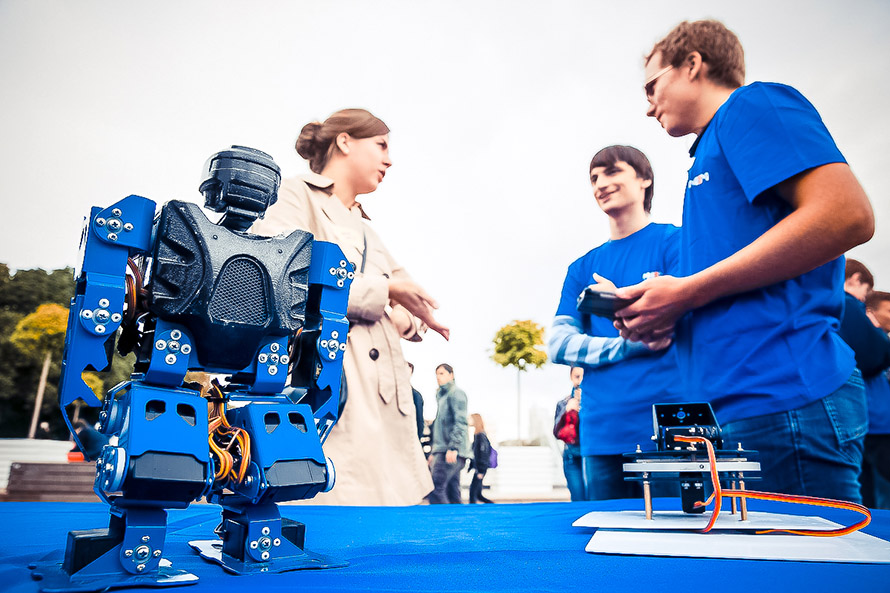Student inventions do not merely fetch awards at contests; they have practical value and often go immediately into production.
Ural Federal University master's student from Nigeria Kingsley Duru jointly with St Petersburg-based ITMO university scientists developed a technology to produce dietary supplements from soy protein waste. The extracted substance can be added to yogurt or bread to use the resultant improved products for prevention and cure of various afflictions, from diabetes to oseteoporosis.

© TPU
A sophomore team at National Research Tomsk Polytechnic University presented medical bracelet PillBand for regular medicine takers. Pills are inserted into the bracelet cells and a sound signal alerts the user to the preset intake time. Counterparts to this device can be found elsewhere in the world, but the Tomsk team’s novelty is that users can always have pills of different sizes on hand in addition to tracking the medication intake time. PillBand doesn’t have to be removed before drug intake so the patient is unlikely to leave it behind or lose.

© FEFU
Far Eastern Federal University first-year student Danil Fonov designed a hand bioprosthesis. It is made of low-cost materials, with prototype price not exceeding 60,000 roubles whereas market prices of counterpart artificial limbs reach half a million roubles. Fonov 3D prints prosthesis parts utilizing biodegradable plastic. At a later stage, he plans to use titanum, aluminum and carbon in prosthesis production. Although these materials are a value-added component, the prosthesis, in terms of price, will still have a three-fold advantage over the existing counterparts.
Replacing small diameter vessels with synthetic tissue has been a vascular surgery problem. Novosibirsk State University jointly with the Cytology and Genetics Institute, Russian Academy of Sciences Siberian Branch, developed a cell-filled vascular graft that models the natural structure of vessels. This reduces the risk of inflammation, thrombosis and immunopathological processes leading to recurrent vascular occlusion.

© SPbPU
Peter the Great St. Petersburg Polytechnic University student Gleb Miroshnik developed a Braille to Russian decoder. The invention might be useful for late blind people and in training the personnel of education centres for blind and visually impaired people. The interactive simulator resembling a gaminig joystick converts Braille symbols into block letters and figures. It is an inexpensive device affordable for rehabilitation and Braille system teaching centres and organisations working with the blind.
Students of Natural Sciences and Mathematics Institute, Ural Federal University, presented a lunar robot for fully automated missions such as lunar module assembly or titanum ore separation. Robot trials have been running on Earth but the designers are confident that the machine is quite ready for lunar assignments.
Siberian Federal University School of Engineering Physics and Radio Electronics graduates designed a GPS pet collar controlled via smartphone application. It can track the location of dogs and cats and monitor such health parameters as temperature, blood pressure and pulse rate. In case of abnormality, pet owners are alerted with an SMS message. The collar only works for short-haired dogs and cats. A long-haired pet option is in the designers’ plans.



























































